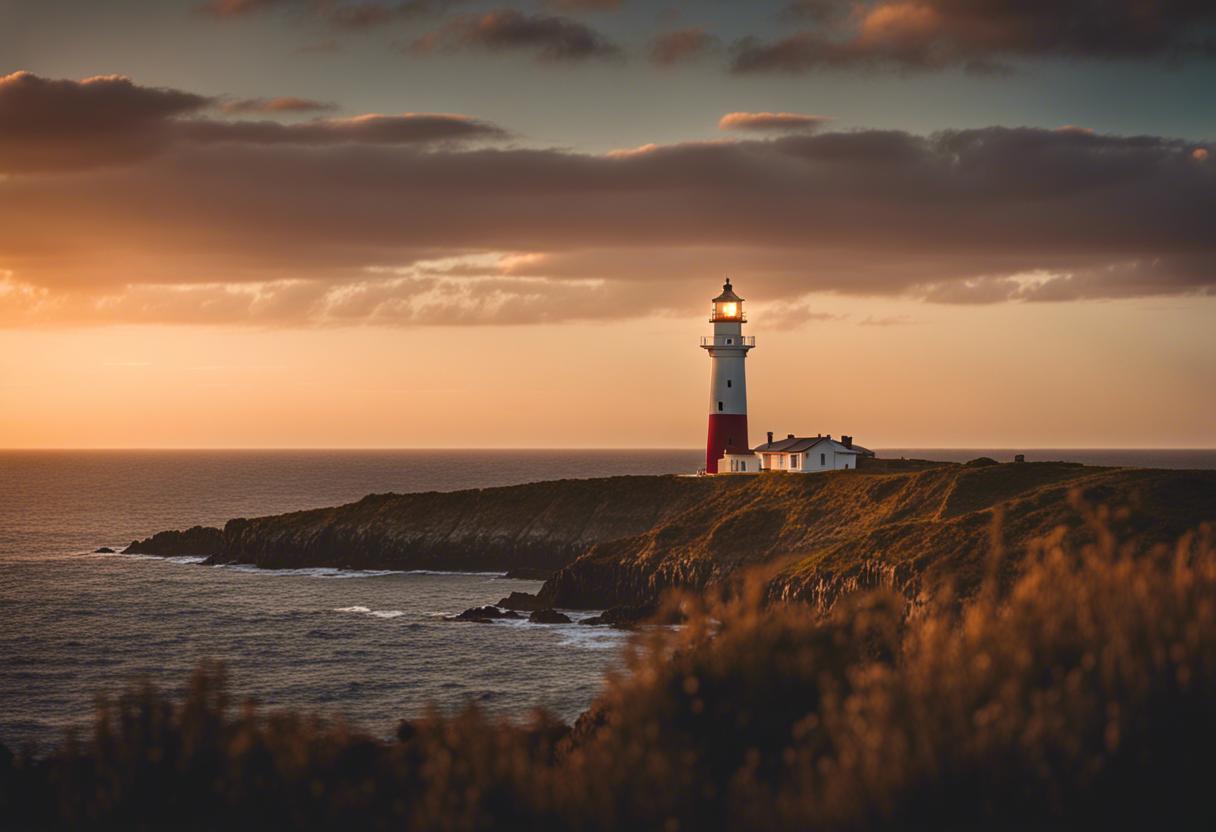Lighthouses across Ireland have been centuries-old sentinels against fierce tempests, symbols of optimism for seafarers and objects of intrigue for those ashore. Noteworthy Irish lighthouses such as Blacksod, Fanad, Ballycotton, Hook, and Wicklow Head hold captivating historical tales and have evolved in their functioning today.
Eugene O’Sullivan recalls his time at the Blackrock lighthouse in Co Mayo when he was a youth. During those times, the only feasible means of transportation was a currach, as the wild and erratic ocean made it too perilous for larger boats. The only method for entrants and exits involved holding onto a winched rope, swung to and from the currach.
On one occasion, O’Sullivan and his companion, along with a pair of live ducks—gifts intended for their Christmas feast—managed to make it safely. However, an overly eager colleague, desperate for his vacation, miscalculated his exit, resulting in an unplanned soak in the cold ocean.
“As he began sinking, the only thing visible was his postbag being dragged after him and his cap floating atop the water,” describes O’Sullivan. Now 83, he fondly remembers the keeper eventually bobbing back to the surface and expressing his frustration towards the person who winched him right off the rock edge.
The ducks, however, were not so fortunate. After a week of corn feed, they felt more like cherished pets than yuletide fare, O’Sullivan mentions. One stern reality faced the keepers: either the birds met their end or dinner was lacking.
In 1997, as automation took over and he served his last days as the principal lighthouse keeper at the Baily on Howth Head, O’Sullivan found moments of reflection. He, alongside his brothers Donal and Hugh, walked the path of their father, DJ, a renowned poet discovered by fellow poet Austin Clarke, and a celebrated nature columnist at the Irish Press for four decades.
The family’s vocation as lighthouse keepers originated from DJ’s father and grandfather, marking a perpetuation of the tradition from the 1800s.
O’Sullivan’s lineage features a strong connection to lighthouses. His great-grandfather, who was assigned to Rathlin Island, used to don the uniform of the British army, using his military skills as a gunner. In 1866, the island began operating a fog signal system which involved shooting an 18lb gun in foggy conditions every twenty minutes. The method eventually changed in 1918 to a system founded on explosives.
O’Sullivan’s grandfather, prior to his untimely death while fishing in 1917, served as the lighthouse keeper of Bull Rock, which fronts west County Cork. The unfortunate event forced his mother to vacate their home in the lighthouse’s accommodation, leaving them with nothing to make way for the successor of her husband. This dramatic transition took place in just three weeks.
O’Sullivan’s recall of the scent of paraffin oil, utilised for lighting before electrification, goes as far back as his visits to his father at the Inishowen lighthouse.
Similar to DJ, O’Sullivan developed a deep bond with the serene Inishtrahull Island to the north of Malin Head, famous for its tranquility, spacious gardening spots, and abundant seabirds.
Despite never having served with his father or two brothers, they collectively remembered the remarkable beauty of lighthouses like Fastnet, Eagle Island, and the Inishtearaght Lighthouse on the Blasket islands.
He acknowledged the arduous commutes to and from the Blaskets, travelling about 40 miles by boat from Castletownbere, but found that the advent of helicopters and deep freezers significantly improved their lives.
O’Sullivan admitted to experiencing some feelings of anxiety when travelling by boat to reach certain lighthouses perched on rugged cliffs or atop piles of hazardous rocks. Even so, O’Sullivan emphasised that once inside a lighthouse, fear was never a factor. He recounted a rare episode on Aranmore Island, County Donegal, when a furious sea shattered their windows while he sipped coffee with another keeper. Still, he insists such incidents remained infrequent.
O’Sullivan fondly recalls his stint in Tory Island, Co Donegal, where despite the inhabitants having an unusual nocturnal lifestyle, his solitude was filled with aimless, long strolls. One of his acquaintances from the island was James Dixon, a local fisherman who began his artistic endeavour in his twilight years. Much of Dixon’s work has been recognised and now graces the prestigious Dublin’s Hugh Lane gallery and the Arts Council’s collection.
Moreover, O’Sullivan also crossed paths with the celebrated British painter, Derek Hill, known for his seasonal work on Tory, who is thought to have motivated Dixon. O’Sullivan jests about the rumour that Dixon used a paintbrush made of a donkey’s tail despite having access to Hill’s materials.
As a lifelong bachelor, O’Sullivan found solace in his solitary six-week periods serving in lighthouses. He understands, though, that it may not have been as enjoyable for those unable to have their families alongside. He remarks saying one might feel more loneliness amidst a crowd than in solitude and acknowledges that life was not a bed of roses for everyone.
O’Sullivan expounds on the responsibilities, mentioning how being accountable for the safety of passing ships could be emotionally draining. He remembers periods of anxiety during winter, watching fishing boats disappear into troughs with the apprehension of whether they’d resurface. Those times, devoid of radios and telephones, were quite challenging.
When his service concluded, O’Sullivan experienced an emotional farewell, marking an end to what felt like a family tradition of serving in lighthouses for over a century. For him, this was a significant passage of family history.

